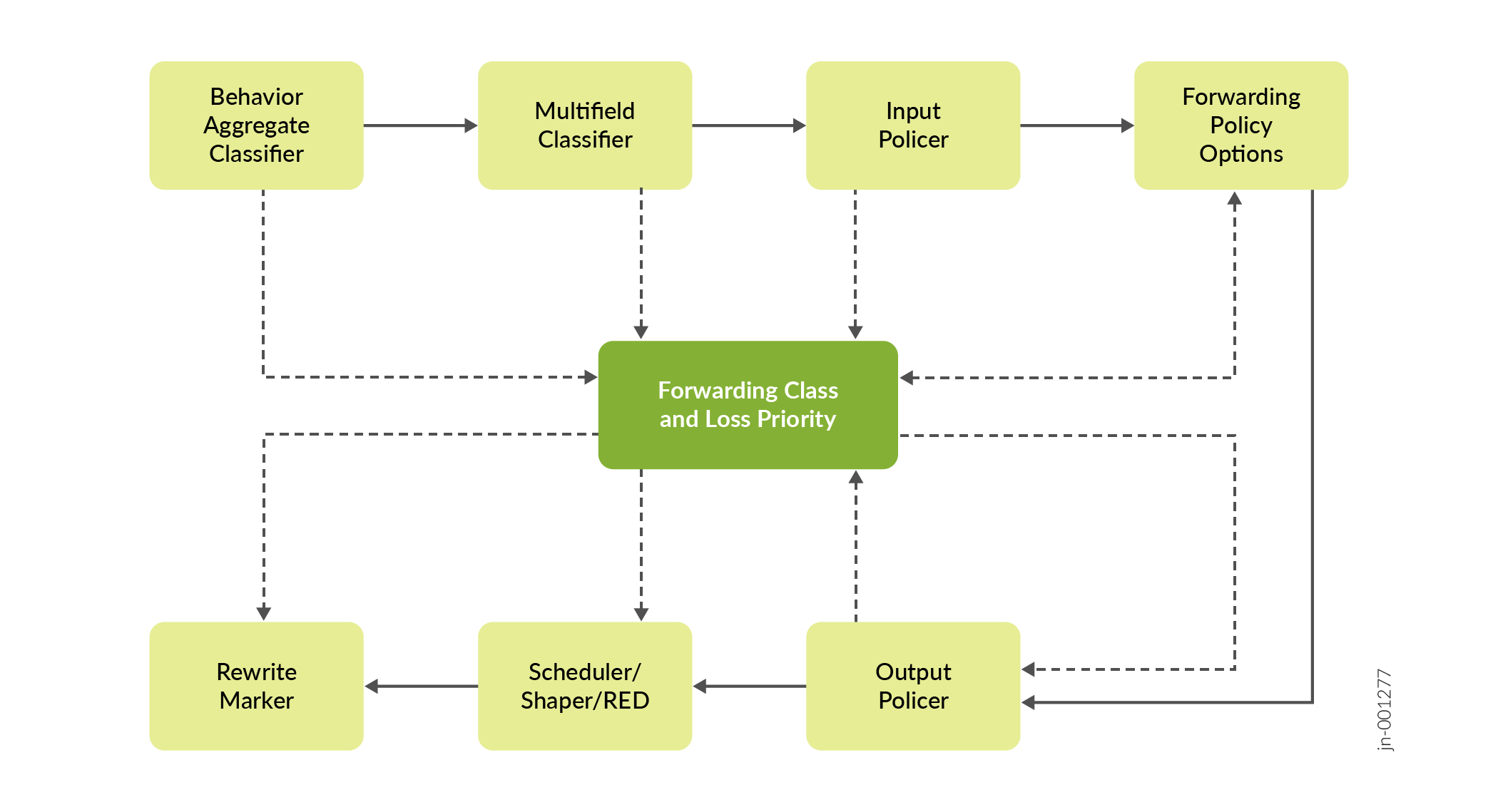CoS Functions for IPv6 Traffic Overview
Class-of-service (CoS) processing for IPv6 traffic uses the IPv6 DiffServ code point (DSCP) value. The IPv6 DSCP value is the first six bits in the 8-bit Traffic Class field of the IPv6 header. The DSCP value is used to determine the behavior aggregate (BA) classification for the packet entering the network device. You use classifier rules to map the DSCP code points to a forwarding class and packet loss priority. You use rewrite rules to map the forwarding class and packet loss priority back to DSCP values on packets exiting the device.
Figure 1 shows the components of the CoS features for Juniper Networks devices, illustrating the sequence in which they interact.

Not all CoS features are supported on all devices.
CoS components perform the following operations:
BA classifier rules map DSCP code points to a forwarding class and loss priority. The forwarding class and loss priority determine the per-hop behavior of the packet throughout the system. The forwarding class associates a packet with an outbound transmission queue. Loss priority affects the scheduling of a packet without affecting the relative ordering of packets. BA classification is a simple way that “downstream” nodes can honor the CoS objectives that were encoded “upstream.”
Multifield classifier rules overwrite the initial forwarding class and loss priority determination read by the BA classifier rule. You typically use multifield classifier rules on nodes close to the content origin, where a packet might not have been encoded with the desired DSCP values in the headers. A multifield classifier rule assigns packets to a forwarding class and assigns a packet loss priority based on filters, such as source IP, destination IP, port, or application.
See Example: Configure and Apply a Firewall Filter for a Multifield Classifier.
Input policers meter traffic to see if traffic flow exceeds its service level. Policers might discard, change the forwarding class and loss priority, or set the packet loss priority bit of a packet. A packet for which the packet loss priority bit is set has an increased probability of being dropped during congestion.
Scheduler maps are applied to interfaces and associate the outgoing packets with a scheduler and a forwarding class.
The scheduler manages the output transmission queue, including:
Buffer size—Defines the period for which a packet is stored during congestion.
Scheduling priority and transmit rate—Determines the order in which a packet is transmitted.
Drop profile—Defines how aggressively to drop a packet that is using a particular scheduler.
See Example: Configuring Class-of-Service Schedulers on a Security Device.
Output policers meter traffic and might change the forwarding class and loss priority of a packet if a traffic flow exceeds its service level.
Rewrite rules map forwarding class and packet loss priority to DSCP values. You typically use rewrite rules in conjunction with multifield classifier rules close to the content origin, or when the device is at the border of a network and must alter the code points to meet the policies of the targeted peer.
Only BA classification rules and rewrite rules require special consideration to support CoS for IPv6 traffic. The program logic for the other CoS features is not sensitive to differences between IPv4 and IPv6 traffic.
